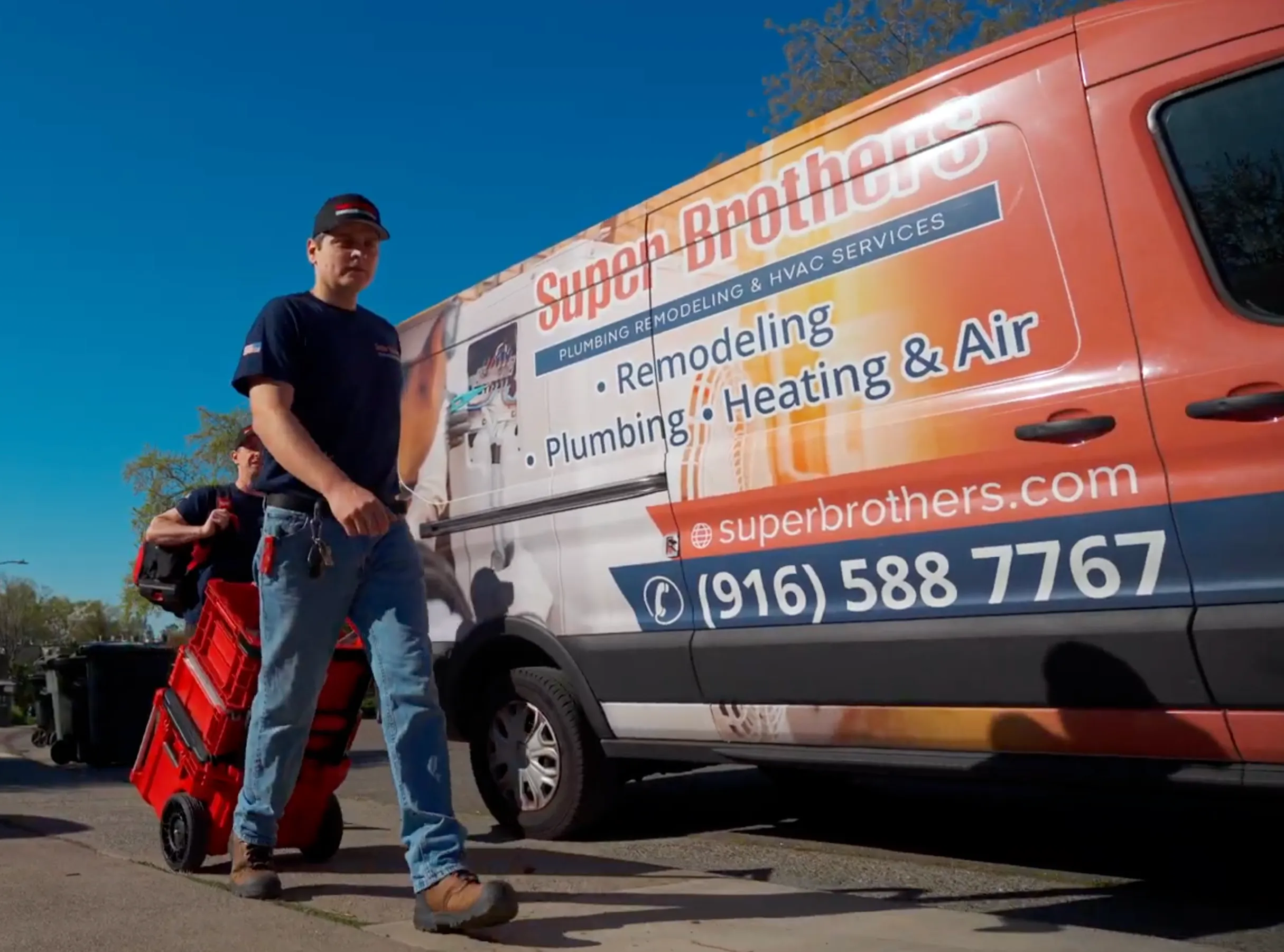Installing a water heater can be a complex task, especially when it involves gas or electrical connections. While this guide provides an overview of the process, it’s essential to recognize the risks involved. If you’re uncertain about any step, contact Super Brothers for professional assistance. Our team is here to ensure a safe and efficient installation for your home.
Step 1: Removing the Old Water Heater
Disconnecting the Gas Line
- Turn Off All Valves: Close both the gas and water supply valves connected to the water heater.
- Detach the Gas Line: Carefully disconnect the gas pipe from the control valve on the water heater.
Draining the Water Heater
- Attach a Hose to the Drain Valve: Connect a garden hose to the drain valve at the bottom of the water heater.
- Drain the Tank: Open the valve to let the water flow out into a safe drainage area. Ensure the water is cool before starting this step.
Disconnecting the Water Line
- Detach or Cut Pipes: Remove or cut the water supply pipes, leaving them as long as possible for easier reconnection.
- Remove the Discharge Pipe: Detach the discharge pipe from the T&P (temperature and pressure) relief valve.
Removing the Old Heater
- Remove Earthquake Straps: Detach the straps securing the heater in place.
- Clear the Area: Carefully remove the old heater, ensuring the space is ready for the new unit.
Step 2: Adjusting Inlet Water Pressure
Proper water pressure is crucial for the safe and efficient operation of your water heater. The recommended pressure for residential installations is between 50-60 psi.
Measuring Water Pressure
- Install a Pressure Gauge: If your home doesn’t have a gauge after the main water shut-off valve, install one to monitor pressure levels.
- Check the Pressure: Use the gauge to measure the pressure. If it’s outside the recommended range, proceed with adjustments.
Using a Pressure-Reducing Valve
- Install the Valve: If the water pressure is too high, install a pressure-reducing valve to bring it within the desired range.
- Test the Pressure: After installation, recheck the pressure to ensure it’s within safe limits.
Step 3: Installing an Expansion Tank
An expansion tank helps maintain consistent pressure in your plumbing system, especially with high water demand.
Preparing the Expansion Tank
- Choose the Connection Method: Depending on your setup, you may use push-fit fittings, soldered connections, or other methods. Prepare the necessary tools and equipment for your chosen connection type.
- Adjust Tank Pressure: Match the expansion tank pressure to the main water pressure using the air valve. Use a hand pump to increase pressure or depress the valve to reduce it.
Tools and Equipment Checklist
- Adjustable wrench
- Pipe cutter
- Teflon tape
- Garden hose
- Pressure gauge
- Pressure-reducing valve
- Expansion tank
- Air pump
- Safety gloves and goggles
Safety Disclaimer
Working with gas, water, and electrical lines can be hazardous. Improper handling during installation can lead to serious risks, including leaks, fires, and damage to your plumbing system. Super Brothers strongly advises against attempting this project without professional help. If you need assistance, call our team for expert service.
For peace of mind and a job done right, trust the professionals at Super Brothers. From removing old units to installing new water heaters with precision, we’ve got you covered. Contact us today to schedule your water heater installation!


